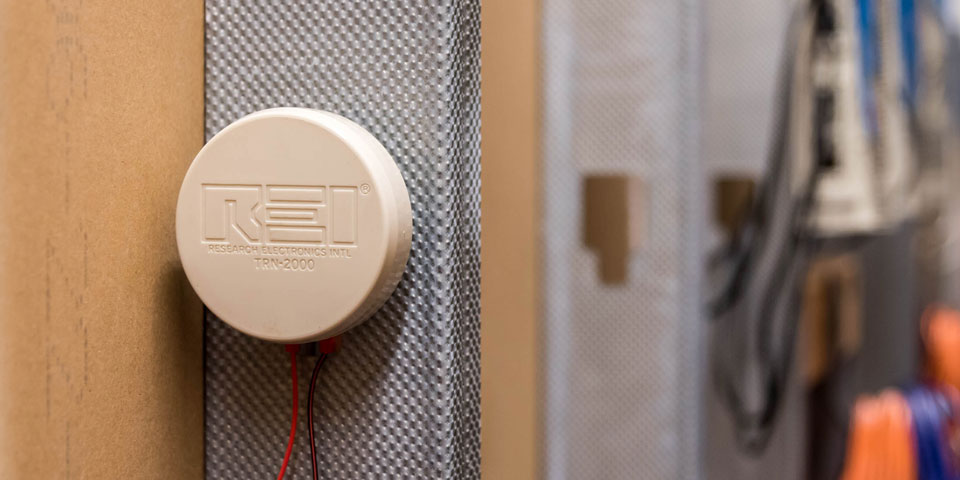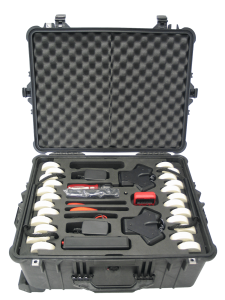
Protecting meeting spaces from illicit eavesdropping is a growing necessity. Start by ensuring there are no devices located inside the room itself, whether hidden or visible, that could be compromised for illicit purposes. Some examples of devices are desk phones, mobile phones, or audio recorders hidden in furniture or everyday items. Another threat that must not be neglected is audio leakage from surrounding surfaces and adjacent offices. These are vulnerabilities for both those listening in on your meeting with illicit intent or the passive observer in an adjacent office.
REI’s Acoustic Noise Generator (ANG) uses audio noise to mask confidential conversations protecting the outer perimeter of a meeting space from eavesdropping. It uses basic technology, which has been utilized for many years, but proper implementation requires a comprehensive understanding of the environment in which the ANG will be deployed. In order to implement layered protection correctly, first answer these questions regarding the meeting space you are trying to secure.
1. What is the square footage of the room?
2. Are there any windows in the room?
3. Is there a drop-ceiling or raised floor?
An effective deployment plan can be decided on once that information has been gathered. The ANG uses two different types of devices in order to protect private conversations: audio transducers that are physically attached to building materials and omni-directional speakers that are mounted in a structure’s air-gap spaces.
TRN-2000 transducers work by injecting acoustic noise into walls, ceilings, windows, plumbing, air ducts, and any other vulnerable structures. While attaching a few transducers to drywall might imply it is effectively masking the private conversation in a meeting space, the reality is without properly layering the transducers, there will still be audio leakage vulnerabilities present. The effective diameter per transducer is 4 to 5 feet; meaning if you have an eight-foot wall on one side of the room, two transducers will need to be placed to ensure the entire wall remains protected.
Windows can be compromised from outside the room if they are not protected as well. Adding a transducer to the window will disperse vibrations throughout the material, preventing audio detection tools like a laser microphone from capturing room audio.
Finally, air gaps like drop ceilings and raised floors above or below a meeting room can be vulnerabilities as well. To combat this, REI’s Omni Directional Speaker projects masking noise into drop ceilings, closets, crawl spaces, and other vulnerable air spaces helping to conceal the conversation.
For best results, noise masking equipment should be installed during construction of the meeting space. Alternatively, installing sound masking in existing structures requires a full understanding of the ANG’s capabilities and best practices for installation. In those cases, REI’s Rapid Deployment Kit provides the tools and accessories to rapidly deploy a complete ANG system in a medium sized meeting room. The kit includes the following:

- Acoustic Noise Generator (2)
- TRN-2000 Audio Transducer (24)
- Omni masking speakers (2)
- ASA-2000 Acoustic Spectrum Analysis Software
- Various tools, cables, and accessories
To learn more visit the ANG product page on our website or reserve your spot in the 5-day Countermeasures Core Concepts course offered at REI’s training facility in Cookeville, Tennessee. This course not only covers the ANG, but offers a complete overview of counter surveillance components, related equipment, and existing threats.
This is an excerpt from REI’s TSCM Journal. Click here to download the full edition.
